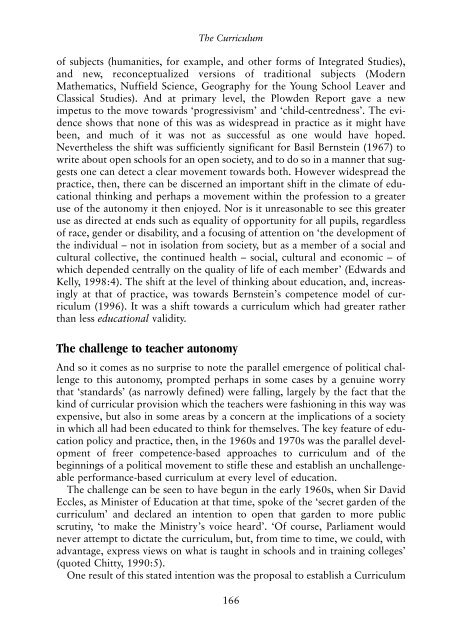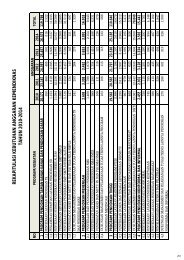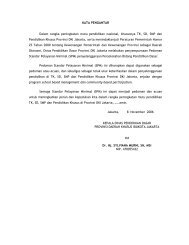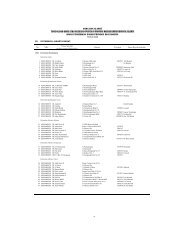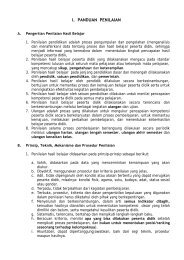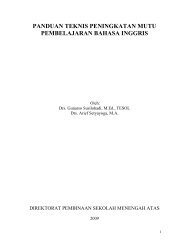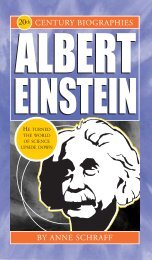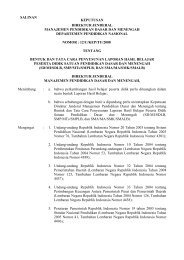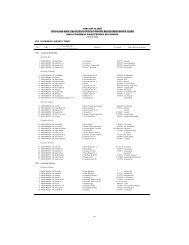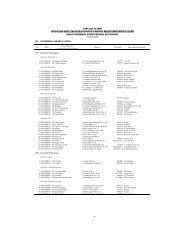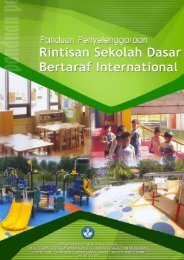The Curriculum - WordPress.com
The Curriculum - WordPress.com
The Curriculum - WordPress.com
Create successful ePaper yourself
Turn your PDF publications into a flip-book with our unique Google optimized e-Paper software.
<strong>The</strong> <strong>Curriculum</strong>of subjects (humanities, for example, and other forms of Integrated Studies),and new, reconceptualized versions of traditional subjects (ModernMathematics, Nuffield Science, Geography for the Young School Leaver andClassical Studies). And at primary level, the Plowden Report gave a newimpetus to the move towards ‘progressivism’ and ‘child-centredness’. <strong>The</strong> evidenceshows that none of this was as widespread in practice as it might havebeen, and much of it was not as successful as one would have hoped.Nevertheless the shift was sufficiently significant for Basil Bernstein (1967) towrite about open schools for an open society, and to do so in a manner that suggestsone can detect a clear movement towards both. However widespread thepractice, then, there can be discerned an important shift in the climate of educationalthinking and perhaps a movement within the profession to a greateruse of the autonomy it then enjoyed. Nor is it unreasonable to see this greateruse as directed at ends such as equality of opportunity for all pupils, regardlessof race, gender or disability, and a focusing of attention on ‘the development ofthe individual – not in isolation from society, but as a member of a social andcultural collective, the continued health – social, cultural and economic – ofwhich depended centrally on the quality of life of each member’ (Edwards andKelly, 1998:4). <strong>The</strong> shift at the level of thinking about education, and, increasinglyat that of practice, was towards Bernstein’s <strong>com</strong>petence model of curriculum(1996). It was a shift towards a curriculum which had greater ratherthan less educational validity.<strong>The</strong> challenge to teacher autonomyAnd so it <strong>com</strong>es as no surprise to note the parallel emergence of political challengeto this autonomy, prompted perhaps in some cases by a genuine worrythat ‘standards’ (as narrowly defined) were falling, largely by the fact that thekind of curricular provision which the teachers were fashioning in this way wasexpensive, but also in some areas by a concern at the implications of a societyin which all had been educated to think for themselves. <strong>The</strong> key feature of educationpolicy and practice, then, in the 1960s and 1970s was the parallel developmentof freer <strong>com</strong>petence-based approaches to curriculum and of thebeginnings of a political movement to stifle these and establish an unchallengeableperformance-based curriculum at every level of education.<strong>The</strong> challenge can be seen to have begun in the early 1960s, when Sir DavidEccles, as Minister of Education at that time, spoke of the ‘secret garden of thecurriculum’ and declared an intention to open that garden to more publicscrutiny, ‘to make the Ministry’s voice heard’. ‘Of course, Parliament wouldnever attempt to dictate the curriculum, but, from time to time, we could, withadvantage, express views on what is taught in schools and in training colleges’(quoted Chitty, 1990:5).One result of this stated intention was the proposal to establish a <strong>Curriculum</strong>166


